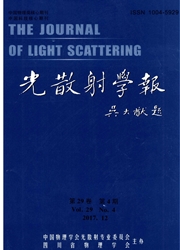

 中文摘要:
中文摘要:
本文报道成都地区紫外UV—B辐射的系统测量与分析。成都地区地面紫外UV—B辐射存在明显的日变化、月变化、月际变化特征:晴天紫外UV—B辐射早晚小,中午大,日最大值为3.65W/m^2,日最小值为0.4167W/m2;UV—B辐射月最大值为3.67w/m^2,最小值为1.67W/m^2,月变化达1.7W/m^2;2006年7月正午紫外UV—B辐射比2005年12月高出3.63W/m^2。夏季晴天正午地面UV—B辐射最大值为3.93W/m^2,远小于中国其他城市的辐射量。而成都位于四川盆地,以多云多雾天气为特征,不同云雾量对紫外辐射有不同程度的衰减,因此成都地区地面实际的紫外辐射相对较弱。
 英文摘要:
英文摘要:
This paper reports systemic measurement and analysis of UV- B irradiance in Chengdu. There exists obvious daily variety, monthly variety and seasonal variety characteristics: UV- B irradiance is high in the morning and afternoon, low at noon in sunny, daily maximum irradiance is 3.65 W/m^2 and minimum irradiance is 0. 4167 W/m^2 ; Month maximum irradiance is 3.67 W/m^2 and minimum irradiance is 1. 67 W/m^2, the variety reaches 1.7 W/m^2 a month. The noon ground UV- B irradianee in July 2006 is higher 3.63 W/m^2 than that in December 2005. The UV - B irradiance reaches 3.93 W/m^2 in sunny of the summer, and is far less than that of other cities in China. Chengdu locates Sichuan basin, the weather characteristics is cloudy and foggy, different amounts of cloud and fog have different attenuation of UV- B irradianee, so the ground practical UV- B irradianee is comparative ebb.
 同期刊论文项目
同期刊论文项目
 同项目期刊论文
同项目期刊论文
 期刊信息
期刊信息
